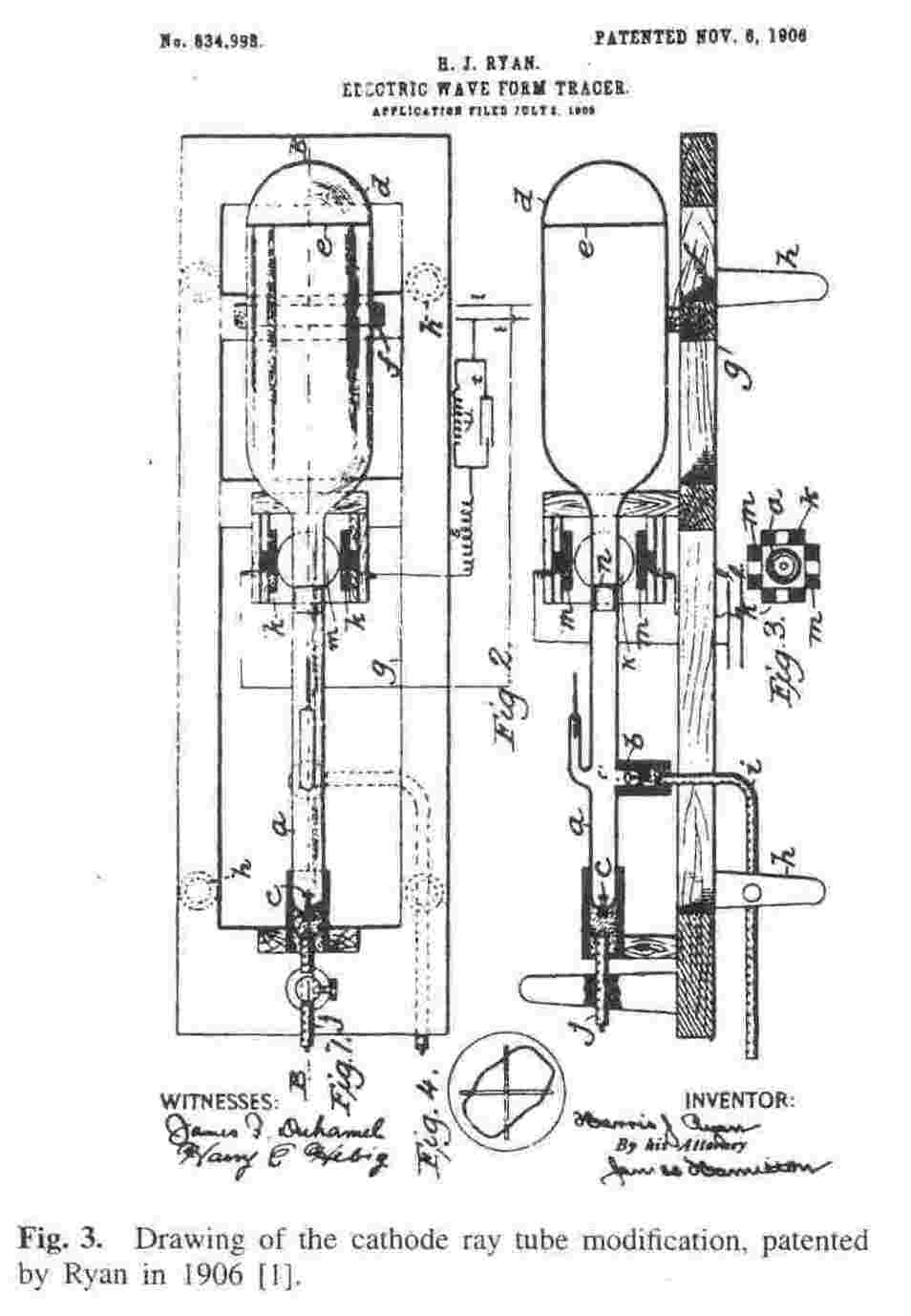October 2010 History
Scanning the Past: A History of Electrical Engineering from the Past
Submitted by Marc Bell, Editor
Copyright 1996 IEEE. Reprinted with permission from the IEEE publication, “Scanning the Past” which covers a reprint of an article appearing in the Proceedings of the IEEE Vol. 84, No. 11, November 1996.
Harris J. Ryan and High Voltage Engineering
Eighty years ago this month, Harris J. Ryan presented a paper on porcelain insulators for high voltage transmission at a meeting of the American Institute of Electrical Engineers (AIEE) in San Francisco, CA. At the time he was a professor of electrical engineering at

Ryan (see Fig. 1) was born in 1866 in Matamoras, FA. After attending Baltimore City College and Lebanon Valley College for three years, in 1883 Ryan enrolled in engineering at Cornell University, Ithaca, NY, where he studied under Prof. William A. Anthony. While at Cornell, a field trip to a plant owned by Frank Sprague stimulated Ryan’s interest in high voltage transmission. Following his graduation from Cornell in 1887, he worked for the Western Engineering Company in Nebraska for a year before returning to Cornell to teach. Fig. 2 shows Ryan giving a lecture at Cornell around the turn of the century. His first technical paper concerned power
Ryan introduced the cathode ray tube as a research instrument in the United States. He acquired his first cathode ray tubes from Germany where they had been developed by Ferdinand Braun and they were known for some time as Braun-Ryan tubes in the United States. Ryan published an AIEE paper in 1903 on the use of the cathode ray tube as an alternating current wave indicator and received a U.S. patent for an “electric wave form tracer” in 1906. The patent drawing is shown in Fig. 3. He used the instrument to collect data for a formula expressing the relationship between corona discharge and the size and separation of conductors in a transmission line. The formula was included in an AIEE paper published in the 1905 Transactions.
Ryan left Cornell in 1905 to accept a teaching position at
In his paper, Ryan discussed the electrical, mechanical, durability, and cost requirements for successful high voltage insulators. Among his conclusions were that porcelain with appreciable porosity should never be used for suspension insulators and that “defective materials in otherwise well designed and manufactured insulators have been responsi¬ble for most of their service failures.” He also mentioned that clear fused quartz seemed an attractive substitute for porcelain for high voltage insulators.
Ryan was elected to the National Academy of Science in 1920 and served as president of the AIEE during 1923-1924. The AIEE awarded him its Edison Medal in 1925 as recognition for his contributions to the art and science of high voltage power transmission. A high-voltage laboratory named for him was dedicated at Stanford in 1926. In his later years, Ryan worked on the development of electric hearing aids for hearing-impaired individuals like himself. He retired from Stanford in 1931 and died in 1934 at age 68.
Publisher Item Identifier S 0018-9219(96)08685-9.
Fig. 1. Harris J. Ryan, considered to be the first great electrical engineer at Cornell University, taught his specialty as a member of the Mechanical Engineering Department from 1888 until 1905 [I].
Fig. 2. Ryan in an electrical engineering lecture hall at Cornell, circa 1900. Ryan prepared almost 1000 students for electrical engineering careers [I).
Fig. 3. Drawing of the cathode ray tube modification, patented by Ryan in 1906 [1].
Fig. 4. Connection drawing of Ryan’s high voltage megger. Note that K indicates the kenotron vacuum tube, G is a galvanometer, and S a porcelain insulator and load, referred to as a circuit “guarding scheme.” [2]
Fig. 5. Details of the Ryan porcelain insulator or “guarding scheme,” as depicted in the J. Cameron Clark AlEE Transactions paper [2].
REFERENCES
[1] Cornell Engineering Quart., vol. 2, no. 2, ]976. [2] J. Cameron Clark, AlEE Trans., vol. 35, Nov. ]916.
[2] J. Cameron Clark, AIEE Trans., vol. 35, Nov 1916
James E. Brittain
PROCEEDINGS OF THE IEEE. VOL. 84. NO.1!. NOVEMBER 1996




